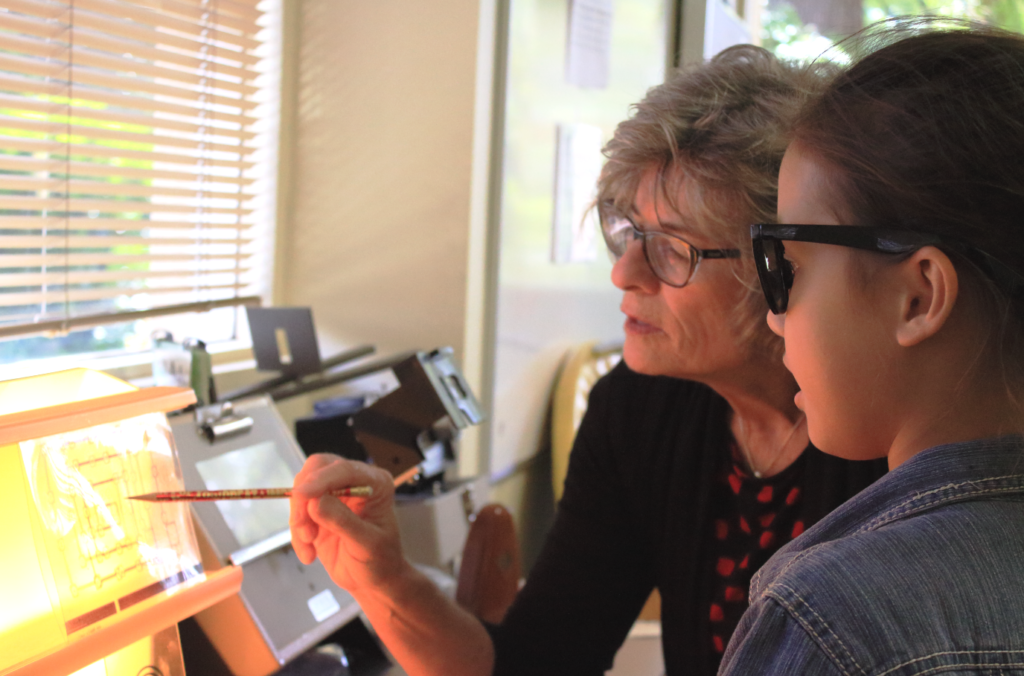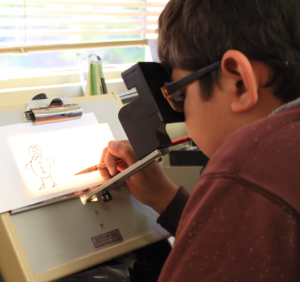Vision Therapy
 Like physical therapy for the eyes and brain.
Like physical therapy for the eyes and brain.
Vision therapy is a doctor-supervised program designed to correct many common visual disorders and/or improve visual skills.
It’s especially useful for treating vision problems that cannot be corrected with eyeglasses, contacts, or surgery alone.
Book an appointment at Palos Verdes Family Vision Optometry to learn more about vision therapy and whether it’s a good option for you.
What is vision therapy used to treat?
 Vision therapy is a lot like physical therapy for the eyes and the brain.
Vision therapy is a lot like physical therapy for the eyes and the brain.
It is typically used to improve focus and range of focus, depth perception, and the ability for the eyes and brain to work together.
A vision therapy program can be used to help with many common vision problems, including:
- Depth-perception problems
- Sports vision problems
- Lazy or crossed eyes
- Vision-sensory impairments
- Vision problems caused by traumatic brain injuries or strokes
- Double vision issues and eye tracking problems
- Certain reading disabilities
How is a vision therapy program structured?
Your eye care provider will prepare an individualized plan that typically involves in-office visits and take-home assignments.
Treatment sessions are typically once or twice weekly, for about 30-60 minutes.
Vision therapy and learning problems
Any child experiencing reading or learning disabilities should have a comprehensive eye exam to test for vision problems. In cases where the learning problem is vision-related, then vision therapy may be a part of the treatment program.
Some of the signs that your child may have a vision problem affecting their ability to learn include:
- Not wanting to read or examine their schoolwork closely
- Complaints of headaches or their eyes hurting
- Lack of attention span during tasks requiring visual attention
- Signs of problems with remembering imagery or words
- Squinting, tilting their head, or closing one eye during visual tasks
Sports Vision
We also work with athletes looking to enhance sports performance. Dynamic visual acuity, tracking skills, proprioception (localizing and balancing your body in space) and consistent excellent visual performance under stress are just a few of the skills that can be improved with vision therapy. Many professional sports teams use vision therapy to help their players excel.
Acquired or Traumatic Brain Injury
Patients with traumatic brain injury may experience mild to debilitating loss of visual function. This may lead to symptoms of difficulty reading, blurred or double vision, short-term memory loss and visual field loss. Vision therapy is often used to help these patients regain their skills and to compensate for vision permanently lost. Treatment may also include prescribing appropriate lenses and prisms. We work in concert with a multidisciplinary group of professionals (such as occupational and physical therapists) to facilitate the patient’s rehabilitation.
If you’d like to learn more about vision therapy and discuss your options with an experienced eye care professional, book an appointment at Palos Verdes Family Vision Optometry. We look forward to meeting you.